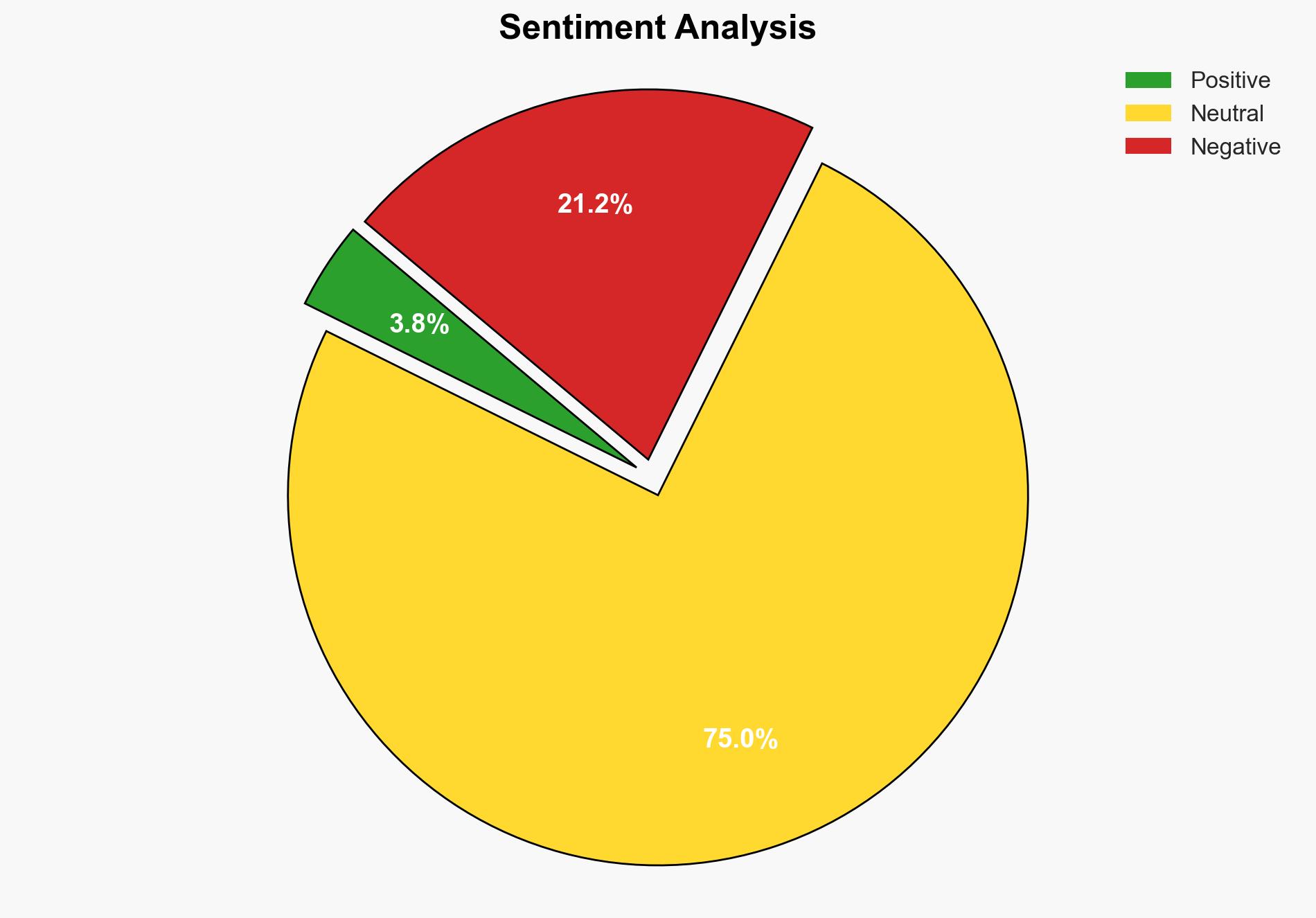Israel launches fresh strikes on Gaza Qatar warns of escalation – Digital Journal
Published on: 2025-11-20
AI-powered OSINT brief from verified open sources. Automated NLP signal extraction with human verification. See our Methodology and Why WorldWideWatchers.
Intelligence Report:
1. BLUF (Bottom Line Up Front)
The current situation in Gaza is highly volatile, with a significant risk of escalation into a broader conflict. The most supported hypothesis is that the recent Israeli airstrikes are a strategic move to weaken Hamas’s military capabilities, but this action risks undermining the fragile ceasefire. Confidence level: Moderate. Recommended action: Engage in diplomatic efforts to reinforce the ceasefire and prevent further escalation.
2. Competing Hypotheses
Hypothesis 1: Israel’s airstrikes are a calculated effort to degrade Hamas’s military infrastructure and deter future attacks, with the expectation that this will ultimately stabilize the region by weakening Hamas’s operational capabilities.
Hypothesis 2: The airstrikes are a reactionary measure to recent provocations, reflecting a breakdown in communication and trust between Israel and Hamas, potentially leading to a renewed cycle of violence.
Hypothesis 1 is more likely given Israel’s historical pattern of preemptive strikes to maintain security and the timing of the strikes following Hamas’s recent actions. However, the potential for miscalculation and escalation remains high.
3. Key Assumptions and Red Flags
Assumptions: It is assumed that both parties are still interested in maintaining the ceasefire despite recent hostilities. It is also assumed that Qatar’s role as a mediator remains effective.
Red Flags: Increased rhetoric from both sides, civilian casualties, and further military mobilization in the region could indicate a shift towards escalation.
Deception Indicators: Potential misinformation from either side regarding the intent and impact of military actions could skew perceptions and decision-making.
4. Implications and Strategic Risks
The continuation of airstrikes risks a broader conflict that could draw in regional actors such as Hezbollah and Iran, leading to a multi-front confrontation. Politically, this could destabilize the region further and strain international relations. Economically, prolonged conflict could disrupt trade routes and energy supplies. In the cyber domain, there is a risk of increased cyber-attacks targeting critical infrastructure.
5. Recommendations and Outlook
- Engage with international partners to reinforce diplomatic channels and mediate between Israel and Hamas.
- Encourage transparency and communication to prevent misinformation and miscalculations.
- Best-case scenario: Ceasefire holds, leading to renewed peace talks and stabilization.
- Worst-case scenario: Escalation into a full-scale conflict involving multiple regional actors.
- Most-likely scenario: Continued sporadic violence with intermittent diplomatic efforts to maintain the ceasefire.
6. Key Individuals and Entities
Benjamin Netanyahu (Israeli Prime Minister), Hazem Qassem (Hamas Spokesman), Nasser Hospital (Gaza), Qatar (Mediator).
7. Thematic Tags
Counter-Terrorism, Middle East Conflict, Ceasefire Negotiations, Regional Stability
Structured Analytic Techniques Applied
- ACH 2.0: Reconstruct likely threat actor intentions via hypothesis testing and structured refutation.
- Indicators Development: Track radicalization signals and propaganda patterns to anticipate operational planning.
- Narrative Pattern Analysis: Analyze spread/adaptation of ideological narratives for recruitment/incitement signals.
Explore more:
Counter-Terrorism Briefs ·
Daily Summary ·
Support us





